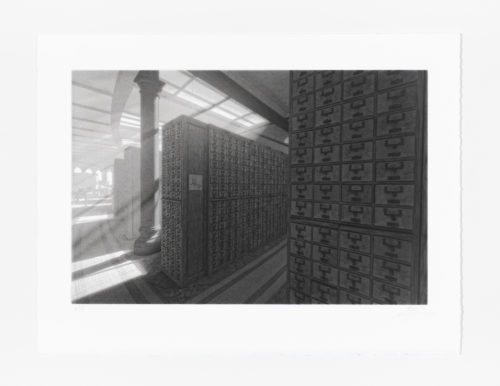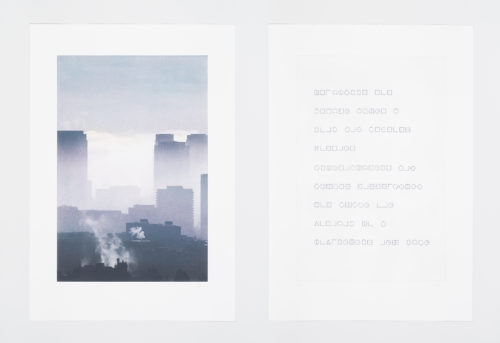Fiona Tan | Ideas of Utopia




BORCH Gallery is delighted to present photogravures and the video installation Elsewhere (2018) by Fiona Tan in the exhibition Ideas of Utopia.
Urban Utopia
Fiona Tan’s Studies for Elsewhere (2018) comprises two diptychs referring to Thomas More’s book Utopia (1518). In his fictional travelogue, More describes an ideal society built on equality, religious tolerance, welfare, and justice. To give this society independence from the outside world, he imagined it to have its own alphabet and developed the coded written script that Tan would use 500 years later in her diptychs to express her own account of contemporary utopia, while spending a year in Los Angeles.
The transcripts of Tan’s thoughts are juxtaposed with photogravures in which we see skyscrapers fade into the hazy sky above the cityscape of Los Angeles in dreamy shades of purple and blue. A city loaded with connotations and preconceived ideas from film and visual culture. Almost as a phenomenon existing beyond the actual place, the cityscape of Los Angeles is in constant movement characterized by its multilane freeways and high rise skyscrapers. In the related film Elsewhere (2018), Tan documents the gradually changing light over the moving city, from dawn to dusk. The mesmerizing images are accompanied by a voice commenting on the city as both perfect and inaccessible at the same time, almost as a utopian idea.
Paper Search Engine
A mysterious glow pervades Fiona Tan’s Shadow Archive (2019), illuminating a well-organised collection of endless archival drawers. The starting point for the series of six black-and-white photogravures originates in Tan’s fascination for the Belgian visionary Paul Otlet (1868–1944), and his ambitious idea to catalogue all human knowledge.
Together with Henri La Fontaine, Otlet developed the idea of a grand utopian scheme. As part of their vision, they initiated the creation of a world archive, the Mundaneum, in 1895. For almost forty years Otlet worked determinedly on the archive, cataloguing all kinds of human knowledge on index cards stored in large wooden cabinets. Otlet and La Fontaine developed the ‘Universal Decimal Classification’, a numerical system of cross-references to offer permanent free access to the archive. Today, the Mundaneum, also known as the ‘Paper Google’, might be considered a milestone in data collection and management, the basic idea behind the Internet.
‘Fascinated but also puzzled by his grand and impossible visionary dream, I have designed and constructed a circular building to house his imaginary archive. But in keeping with the digital era we currently live in, this utopian architecture, which I have drawn up as realistically as possible and on a scale of one to one, has been built entirely digitally, using CGI computer software.’ – Fiona Tan
While Tan’s circular architecture is registered in all its details the actual place does not exist. The series of photogravures shows Tan’s imagined interior views of Otlet’s never completed utopian archive.
FIONA TAN, born in 1966 in Pekanbaru, Indonesia, lives and works in Amsterdam. Tan works primarily with photography, film and video installation. Her works relate to themes such as identity, memory and history, often based on thorough research. She has been collaborating with BORCH Gallery & Editions since 2018.
The exhibition is part of Gallery Weekend Berlin and EMOP – European Month of Photography.



Learn more about Fiona Tan

